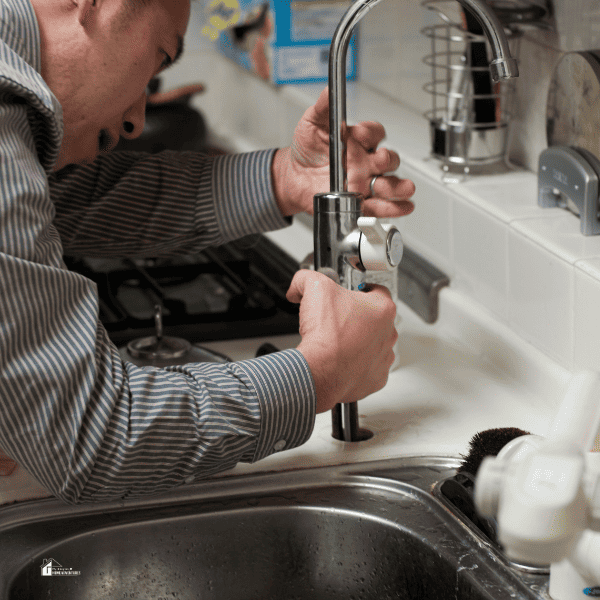How Quitting Smoking Can Help Moms Save Money and Protect the Home
This post may contain affiliate links which might earn us money. Please read my Disclosure and Privacy policies hereMost are aware of the health burdens that come with smoking, but the impacts of this habit on finances and the home aren’t discussed as often. In previous posts, we mentioned that one way to save money is to quit smoking.
Over a lifetime, smokers in the United States can spend around $2 million to $4 million on cigarettes, meaning that thousands of dollars are spent annually to fuel the habit. Along with the strain on your wallet, cigarettes can damage the home in various ways.
Stains and smells can increase costs when they need to be cleaned up, further denting your finances. As a stay-at-home mom, these aspects are a big priority in taking care of yourself, your family, and your home, but smoking can hamper that. Instead of making up for these losses, kicking your smoking habit is the best way to prevent these issues.
Here’s how quitting can help moms save money and protect the home, plus tips on quitting successfully:

Reduced healthcare costs
Smoking can lead to many diseases and is one of the leading causes of preventable deaths in the US. As such, treating smoking-related ailments and conditions is something many Americans have to go through.
However, these treatments and medical expenses can be costly. Adult cigarette smoking accounts for 11.7% of all US annual personal healthcare expenditures and 16.4% of all healthcare spending on inpatient care.
Even if your insurance plans cover these expenses, smokers are typically charged higher premiums than non-smokers. For those without insurance, out-of-pocket payments can be costly if constant check-ups and treatments are needed to manage smoking-related health issues.
Quitting smoking can help mitigate these costs as you prevent health issues from worsening, saving you a lot of money on treatments and medication in the long term.
Additionally, you won’t have to worry about the financial burden of buying packs of cigarettes to fuel your habit; the combined costs of your spending on smoking and medical expenses will no longer be a major struggle if your health is in much better shape.
Improved home conditions
Over time, constant smoking in the house affects the interior of it. The tar and nicotine in cigarettes leave behind stains and odors on walls, ceilings, furniture, and other surfaces when cigarette smoke is exhaled. Not only is the grime unsightly, but it’s also challenging to clean up, and it can be dangerous for you and your family.
Thirdhand smoke—or the smoke residue that settles on surfaces—can pose a great risk to people when they come in contact with contaminated areas. Touching a piece of furniture and then your face can expose you to harm, and it can lead to various health effects, including the triggering of skin diseases, as Science Alert reports.
Cleaning up stains and odors from cigarettes constantly to avoid damage to your health and home takes a lot of money, time, and effort. Quitting to prevent these issues is the best measure to save your funds and keep your home fresh and safe.
You won’t need to hire a professional cleaning service regularly or frequently spend money on cleaning supplies if you eliminate the problem’s source. While cleaning the home of smoke residue can be a long process, you can help by ventilating the house and thoroughly cleaning all your surfaces and clothes to help remove the particles.
Adding some greenery to the home can also help; the “Air Purifying Plants” post lists some great plants, like English Ivy and Peace Lilies, that can beautify the home while purifying the air from harmful toxins.
Tips for quitting cigarette
Try smoke and tobacco-free alternatives.
With cigarette use declining due to its impacts on health, the home, and expenses, many have sought alternatives to help curb cravings and assist in smoking cessation.
Nicotine replacement therapy (NRT) products, such as nicotine patches, gum, inhalers, and sprays, have been growing in popularity in the US; they are effective in helping smokers quit and don’t pose the same health threats as cigarettes and other tobacco products.
Nicotine pouches are becoming a popular alternative due to their ease of use, wide array of flavors, and lower nicotine strength offerings. Smoke-free ZYN spearmint nicotine pouches give users a refreshing burst of flavor for up to an hour by tucking one of these pouches under the upper lip.
You can enjoy the nicotine experience from the pouches without the effects of smoke and tobacco on your wellness and home. They’re also potentially more cost-effective than buying cigarettes; you can easily purchase them in bulk, and buying them online can give you deals like free shipping when your order reaches a certain amount.
Nicotine lozenges are also relatively novel, but they’ve rapidly gained popularity. NOSMOK nicotine lozenges have recently been released in a mint flavor with sugar-based and sugar-free variants in 2mg and 4mg strengths. Along with the lozenges, an AI-enabled chatbot was also released to help users identify triggers, understand their habits, and encourage quitting.
Pinpoint your triggers.
Whether you’re aware of it or not, certain situations or things can trigger your desire to smoke and make it harder for you to stay away from cigarettes. These triggers prompt you to smoke out of routine, and it can feel satisfying when you reward yourself with a cigarette; this keeps you hooked on the habitual act of smoking.
These triggers can be stress, social situations, or being around other smokers. It varies depending on the person, but identifying these triggers is crucial for making the quit easier.
Knowing what cues you into smoking can help you avoid those circumstances or things to help prevent your habit from activating. If being around smokers and alcohol can be a trigger, avoid happy hours or drinking with friends when you go out. Instead, try keeping social gatherings in a safe and smoke-free environment.
Hosting events at home can motivate you to prevent smoking from occurring if you want to keep the place clean and safe for you and your loved ones. Not only will you manage your trigger, but it can help you save money by staying in instead of going out.

Find the right support.
Support is crucial for any stay-at-home mom; your community can get you through tough times and struggles, including quitting smoking. Reaching out to others and asking for help can be a vulnerable experience, but talking to your spouse, family, friends, and more can help you be accountable for your habit.
Bringing them into your journey can also help you stay motivated to quit, knowing that better health and a better home can benefit you and your loved ones.
Other than family and friends, finding a community of people who are also on a quitting journey can help establish a connection and a sense of solidarity. Online support groups and apps can help you connect to communities that can add a social factor to your quitting journey, and you can attend meetings and gain guidance at home. Hotlines and chat services are another way to gain support if you’d prefer a one-on-one approach to support.
A Patient Education and Counseling journal study notes that web-based live chats expand access to tobacco cessation coaching and help with behavior change techniques to guide smokers.
Choosing the best support method for your journey can make your quit more successful and less isolating. Best of all, most of these support services are free!







